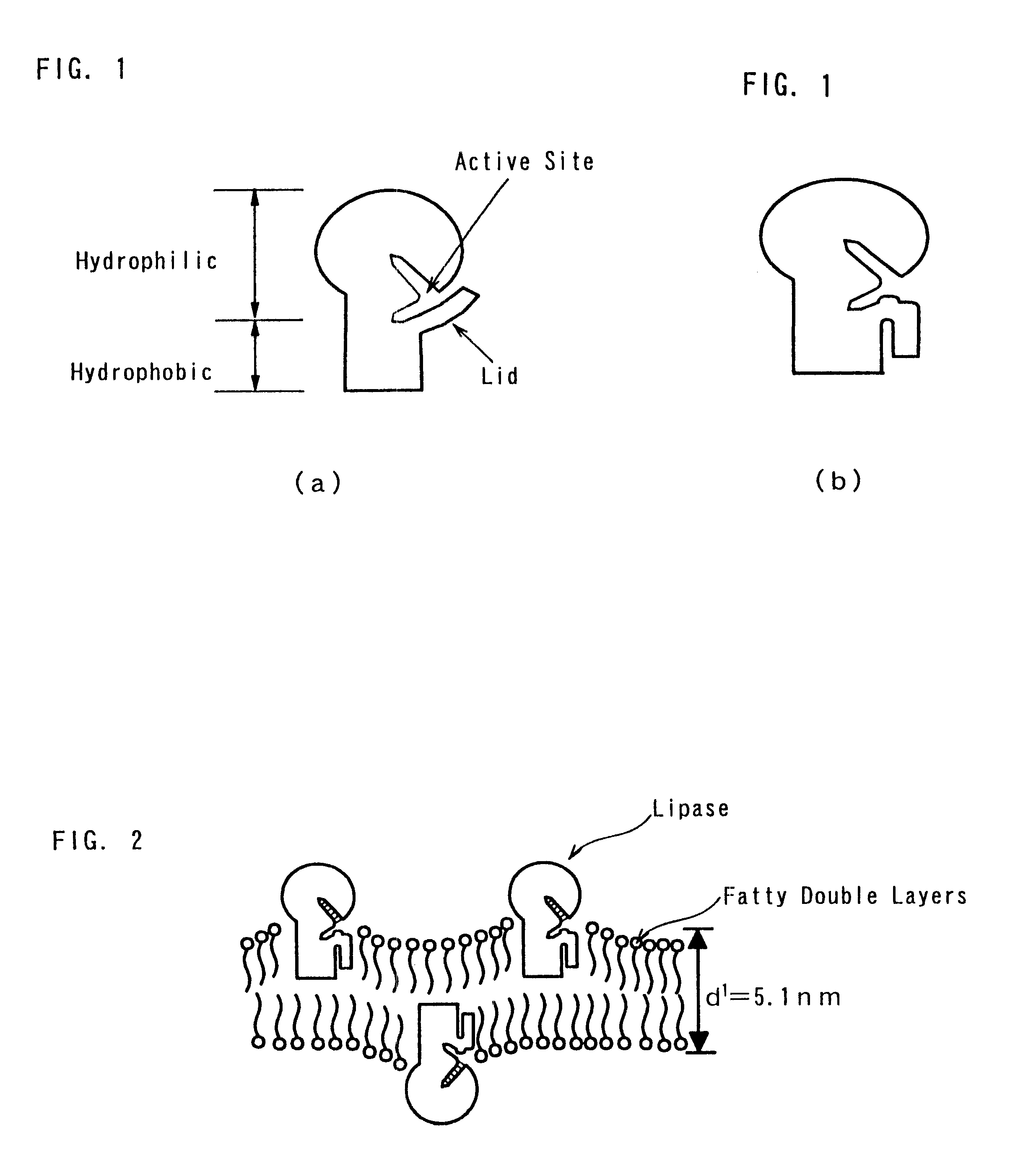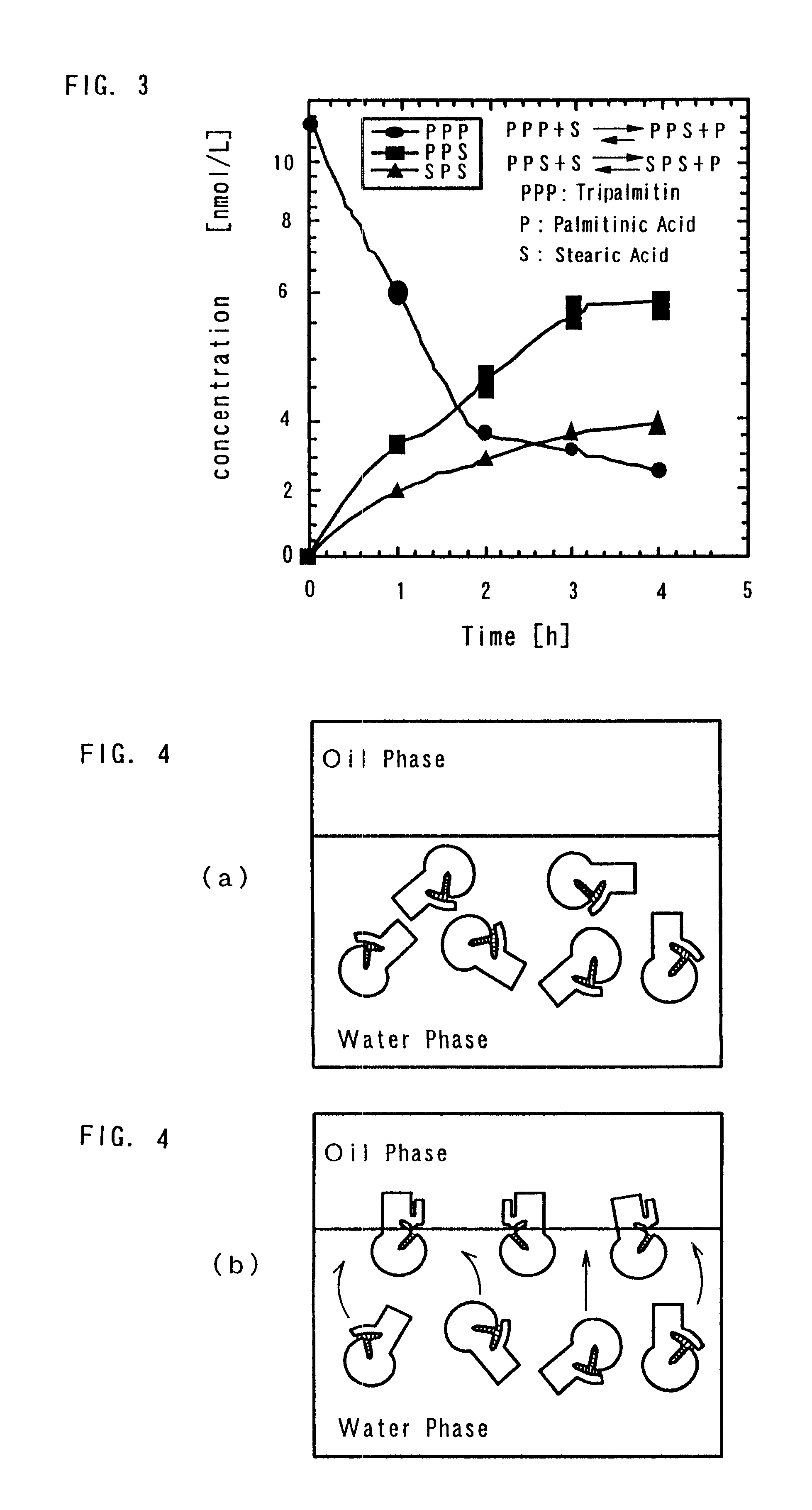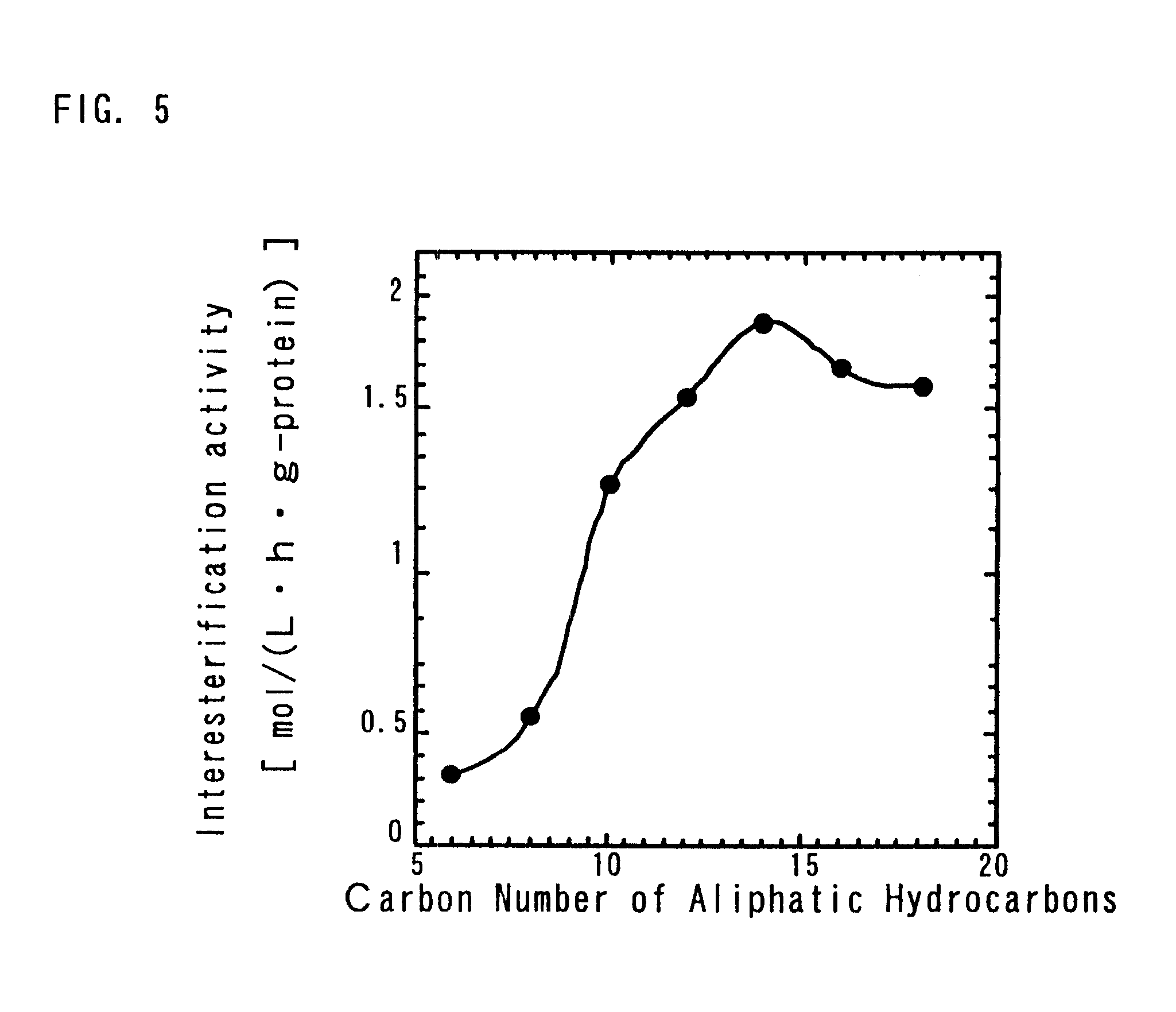Method of producing activated lipase
a technology of activated lipase and activated lipase, which is applied in the direction of biochemistry apparatus and processes, enzyme stabilisation, enzymology, etc., can solve the problems of inability to apply materials, inability to reproduce target materials with high efficiency, and inability to conduct transesterification or ester composing reactions with such high efficiency
- Summary
- Abstract
- Description
- Claims
- Application Information
AI Technical Summary
Problems solved by technology
Method used
Image
Examples
Embodiment Construction
Hereinafter, detailed explanation of the embodiments according to the present invention will be given by referring to the attached drawings. As used herein, the language "fat phase" is used interchangeably with "organic phase" and "organic solvents".
Lipase (20 mg originated from Rhizopus japonicus) is dissolved into buffer solution (5 ml), and into the obtained water solution is added tetradecan] C.sub.14 H.sub.30 as fatty phase.
After stirring at 40.degree. C. for one (1) hour under the condition of two-phases of the tetradecan C.sub.14 H.sub.30 and the buffer solution, the lipase is freeze dried, whereby water and fat are removed therefrom.
With use of such a lipase as obtained in this manner, transesterification reaction is conducted between stearic acid and tripalmitin in hexane.
In the graph of FIG. 3, there is shown a relationship between elapsed time of the transesterification reaction between stearic acid and tripalmitin and product formed thereby.
As is apparent from FIG. 3, it...
PUM
| Property | Measurement | Unit |
|---|---|---|
| thickness | aaaaa | aaaaa |
| pH | aaaaa | aaaaa |
| pH | aaaaa | aaaaa |
Abstract
Description
Claims
Application Information
 Login to View More
Login to View More - R&D
- Intellectual Property
- Life Sciences
- Materials
- Tech Scout
- Unparalleled Data Quality
- Higher Quality Content
- 60% Fewer Hallucinations
Browse by: Latest US Patents, China's latest patents, Technical Efficacy Thesaurus, Application Domain, Technology Topic, Popular Technical Reports.
© 2025 PatSnap. All rights reserved.Legal|Privacy policy|Modern Slavery Act Transparency Statement|Sitemap|About US| Contact US: help@patsnap.com



